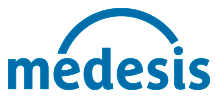Huntington disease
Huntington's disease is a fatal, autosomal, dominant progressive neurodegenerative genetic disease.
In its mutated form, Huntingtin and its fragments accumulate in the cytoplasm and the nucleus of neural cells thus resulting in multiple disturbances that lead to the progression of the disease.
There is currently no treatment for this disease.
NanoLithium
For the prevention and treatment of psychiatric disorders (mood disorders and depression) and a decline in cognitive abilities (memory, conversation and decision-making disorders).
Preclinical studies carried out at Columbia University in Vancouver, Canada (published by Michael Hayden’s team) showed a marked improvement in motor performance and behavior in a YAC128 transgenic mouse model.
Pouladi MA, Brillaud E, Xie Y, Conforti P, Graham RK, Ehrnhoefer DE, Franciosi S, Zhang W, Poucheret P, Compte E, Maurel JC, Zuccato C, Cattaneo E, Néri C, Hayden MR . NP03, a novel low-dose lithium formulation, is neuroprotective in the YAC128 mouse model of Huntington disease – Neurobiol. Say. 2012 Dec; 48 (3): 282-9.
The product has an Orphan Drug designation with the European Medicines Agency (EMA) and the US Food and Drugs Administration (FDA).
NanosiRNA HD
To inhibit the expression of the mutated gene responsible for the disease, with an interfering RNA formulated in Aonys®
Patients with Huntington’s disease (HD) are heterozygous: they have one mutant allele and one wild-type allele.
NanosiRNA HD is a therapy targeting SNPs (single nucleotide polymorphisms) to selectively decrease the mutated allele and leave the wild-type allele functional.
The development plan was validated by the EMA (European Medicines Agency) in May 2021.
NanoPEP42
For the prevention of neuronal death by blocking the aggregation of intracellular mutant HTT with a peptide isolated from HTT and formulated in Aonys®
P42 is a 23-aa peptide isolated from endogenous Drosophila Htt in a region rich in proteolytic sites; it plays a critical role in the process of Huntington disease pathogenesis. P42-induced neuroprotection was first demonstrated using a Drosophila model of Huntington disease with mutant-Htt aggregation, with various neuronal phenotypes induced by polyQ-hHtt, including ocular degeneration or impaired vesicular traffic in axons and on physiological behaviors such as larval locomotion and adult survival.
The therapeutic potential of P42 was then confirmed in a mouse model of Huntington disease, the R6/2 mouse, using the Aonys® micro-emulsion, allowing non-invasive administration through the oral and/or rectal mucosa, P42 was efficiently delivered to the brain and was targeted to most cells, including striatal neurons. It resulted in marked improvement in behavioral disorders associated with Huntington disease such as foot seizure, fall latency, rotarod testing and body weight, as well as several histological markers of HD on brain sections such as aggregation, astrogliosis, or enlargement of ventricular areas.
More recently, the mechanism of action of P42 on the brain-derived neurotrophic factor (BDNF) and tropomyosin related kinase B (TrkB) pathway has been demonstrated in R6/2 mice. BDNF expression is greatly reduced in R6/2 mice, which influences the striatal neuron deficit associated with motor impairment and Huntington disease neuropathology.
– Arribat Y, Talmat-Amar Y, Paucard A, Lesport P, Bonneaud N, Bauer C, Bec N, Parmentier ML, Benigno L, Larroque C, Maurel P, Maschat F. – Systemic delivery of P42 peptide: a new weapon to fight Huntington’s disease – Acta Neuropathol. Commun. 2014 Aug 5;2:86
– Marelli C and Maschat F. – The P42 peptide and Peptide-based therapies for Huntington’s disease
Orphanet Journal of Rare Diseases (2016) 11:24
Preclinical development is underway.
A phase I/II clinical trial is expected to start in 2023.
The product has an Orphan Drug designation with the EMA and the US FDA
